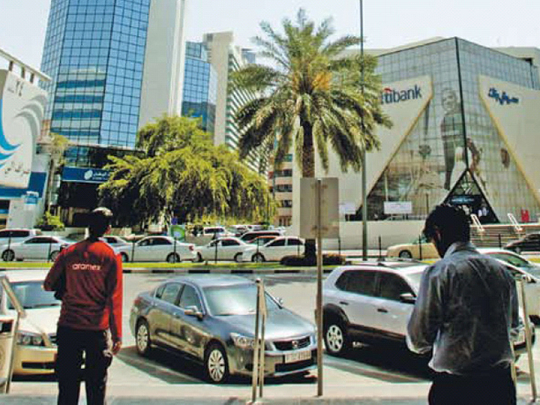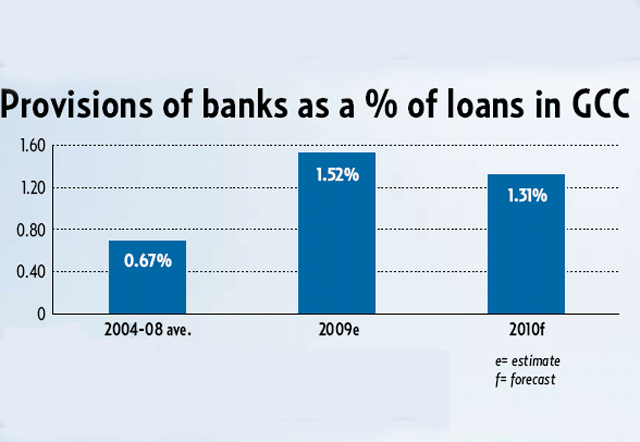
Dubai: Gulf banks are estimated to have made provisions worth $9.4 billion (Dh34.5 billion) for 2009, a 40 per cent increase over the previous year due to credit losses and a five-fold increase over the modest $1.8 billion provisions made in 2007, according figures collated by Kuwait Financial Centre (Markaz).
The 61 banks in the Gulf Cooperation Council (GCC) made provisions worth $6.41 billion in the first three quarters of last year during which provisions continued to rise quarter-on-quarter.
"As a percentage to loans, we forecast provisioning to hit 1.3 per cent in 2010 as compared to 0.8 per cent during 2003-2009. The spike in some cases have been caused by specific events unrelated to the ongoing financial crisis [Gulf Bank, Kuwait and ABC, Bahrain]. However, most of the story clearly points to aggressive caution on the part of banks to drive the bad news when the mood is gloomy," said M.R. Raghu, Head of Research of Markaz.
Provisions against the impairment of assets and credit losses amounted to $6.68 billion in 2008, a nearly four-fold increase from 2007. This was due to heightened provisions taken by many of the GCC's largest banks in order to withstand the possibility of defaults in their loans books.
This brought the GCC's provision as a percentage of loans ratio to 1.13 per cent from an average of 0.58 per cent between 2003 and 2007.
Pivotal
Banks made slight increases to their provisions across the board in 2008. However, pivotal in moving the overall GCC needle were provisions of over $1 billion from both Gulf Bank of Kuwait and Bahrain's Arab Banking Corp, over $700 million from Kuwait Finance House and nearly $500 million from Emirates NBD.
In the first nine months of last year, Saudi banks set aside $1.1 billion of provisions, Kuwaiti banks $1.8 billion while banks in the United Arab Emirates earmarked $2.57 billion due to their higher exposure to troubled Saudi groups Algosaibi and Saad.
According to Markaz, 2008 was catastrophic in terms of the sheer wealth destruction following the collapse of the financial bubble.
Within the GCC, the focus at the end of 2008 was on collapsing asset prices relating to the UAE real estate sector, the Kuwait investment sector and the haemorrhaging stock markets across the board.
In 2009, the flow of provisioning has been divergent among GCC nations. In Saudi Arabia, provisions increased 7 per cent quarter on quarter and a further 11 per cent in the third quarter to total $ 1.1 billion for the first nine months. In Kuwait, the level of provisions shot up 42 per cent quarter on quarter in the second quarter of 2009, but declined 17 per cent in the third quarter, bringing the total nine month provisions to $1.8 billion. "We expect GCC provisions to end 2010 at $8.76 billion, representing a 7 per cent decline over our full year 2009 estimated provisions of $9.4 billion. Concurrently, lending activity stagnated across the GCC in 2009, with growth rates falling well below historical averages, as banks have hoarded cash and been hesitant to extend financing in a tenuous economic environment," said Layla Al Ammar, Investment Analyst with Markaz.
Overall growth
Markaz analysts expect GCC loans to show an overall growth of 4 per cent in 2009, a far cry from the historical average of 29 per cent between 2003 and 2008. "While we expect to see some recovery in lending in the GCC, we still expect Saudi Arabia and the UAE to be a drag on overall GCC loans growth," said Raghu.
"Hence, we have a forecast 2010 loans growth of 8 per cent for the GCC to $667 billion," he said.













